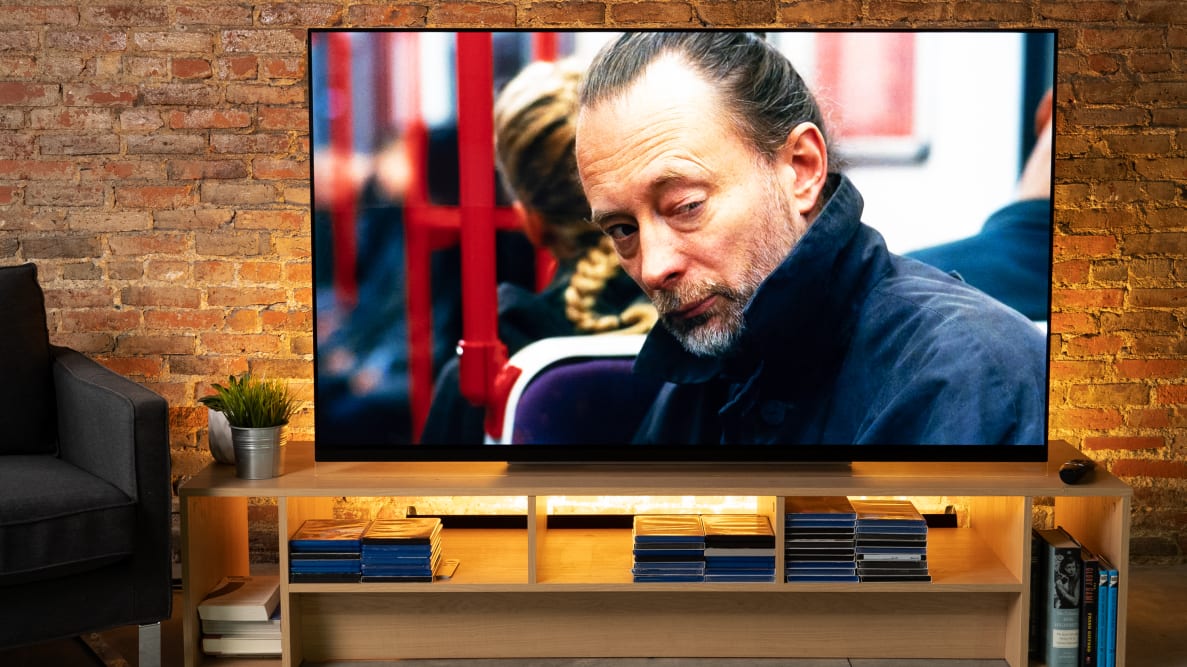The LG E9 is one of LG's most premium OLED offerings for 2019, and one of the best TVs we'll see all year. Like the LG C9, which is a slightly less dynamic but slightly more affordable LG OLED TV, the E9 is a poster child for premium picture quality. To put it more succinctly: contrast, color, and motion have rarely looked better on a consumer TV than they do on the LG E9.
There are a couple of caveats, however—the E9 doesn't get nearly as bright as some of the high-end, quantum dot TVs that compete with it at the highest level, and OLED TVs are still prohibitively pricey for most people, despite its continued downward cost trend. Still, for those determined to buy the best of the best, there are very few TVs in the same conversation as the E9. Pound for pound, it's one of the best OLED TVs ever made, and easily one of the best TVs of the year.
About The LG E9 OLED TV Series
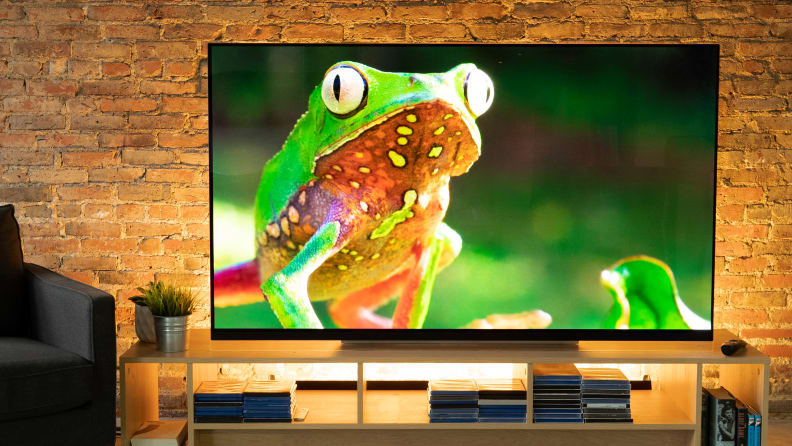
The LG E9 is available in two sizes. Here's how they stack up:
• 55-inch (LG OLED55E9PUA), MSRP $2,799.99 • 65-inch (LG OLED65E9PUA), MSRP $3,799.99
Different sizes of TVs in a series tend to perform identically to one another, and this is especially true for OLED TVs. In other words, the only noteworthy difference between the two E9 models is their screen size. Here's a rundown of what you're getting with both the 55- and 65-inch LG E9:
• 4K (3,840 x 2,160) resolution • Supports High Dynamic Range (HDR10, HLG, Dolby Vision, and Dolby Atmos) • Native 120 Hz refresh rate • LG webOS smart platform • DCI-P3/10-bit color space • LG ThinQ AI functionality (with Alexa and Google Assistant) • a9 processor (second generation)
Performance Data
Before testing each TV, we make sure the panel is on and receiving a continuous signal for at least 24 hours, allowing the pixels plenty of time to warm up. All of the SDR tests were carried out in LG's "ISF Expert (Bright Room)" picture setting. For HDR tests, our chosen picture setting was "Technicolor Expert."
We use a standard ANSI checkerboard pattern for most of our basic contrast tests, but we also use white and black windows ranging from 2% to 90% to test how well the contrast holds up while displaying varying degrees of brightness.
I'll expand on our test results throughout the review, but for now, here are some key takeaways:
• HDR contrast (brightness/black level): 281.9 nits/0.002 nits • SDR contrast (brightness/black level): 133.3 nits/0.002 nits • HDR peak brightness: 841.7 nits (20%)
• HDR color gamut coverage: 97% (DCI-P3/10-bit) • SDR color gamut coverage: 100% (Rec.709)
• Viewing angle: ±70°
Connectivity
Both casual users and AV enthusiasts will find the E9's connectivity options to be satisfactory. Here's what you'll see when you take a trip around the back of the E9's panel:
• 4x HDMI 2.1 (1x ARC) • 3x USB 2.0 • Component, LAN ethernet port, RF input, optical audio output
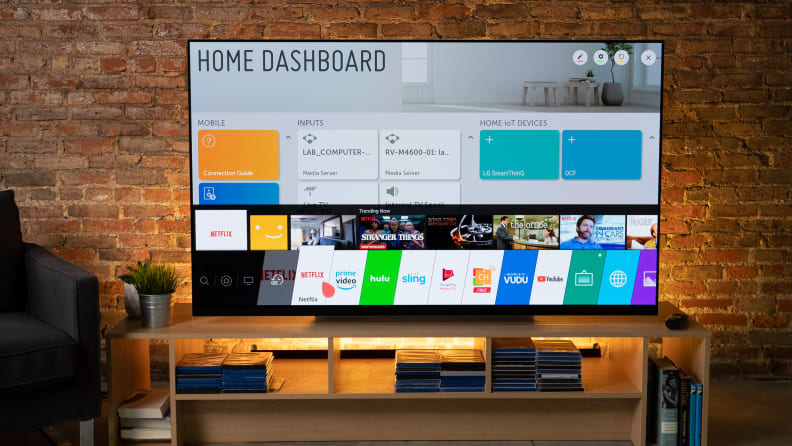
What We Like
All of the benefits of OLED technology with an added touch of brightness
The benefits of OLED displays are myriad, but here's what you need to know in a nutshell: Each of the TV's pixels is self-illuminating, which allows for, among other things, far better contrast than most garden-variety LCD TVs. In other words, since TVs like the LG E9 don't need to account for a backlight, they're free to regulate brightness on a pixel-by-pixel basis. This is the foundation of OLED's success and the key to understanding why the technology excels at pretty much everything.
There is a drawback to this tech, however: In an age where TVs are getting brighter and brighter, OLED TVs aren't quite capable of the levels of brightness we've seen in non-OLED TVs equipped with quantum-dot displays. To a certain degree, OLED TVs can get away with this relative lack of brightness thanks to their incredibly deep black levels, but it's easy to understand why folks with brightly lit living rooms might be on the fence about investing in an OLED TV.
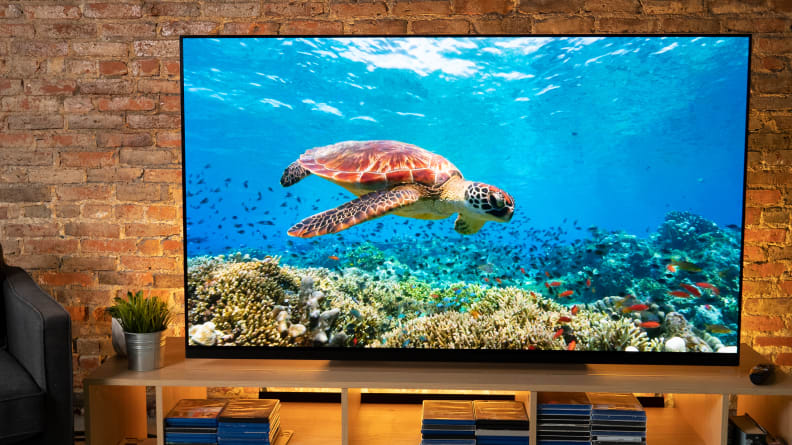
The good news, however, is that even though the LG E9 is predictably not as bright as some of its quantum-dot-powered competitors, it's capable of getting brighter than any OLED we've tested to date. In HDR, the E9 absolutely sings—particularly if your room is dark or dimly lit. SDR content looks phenomenal, too, but this is where the E9's peak brightness begins to weaken compared to SDR content on a Samsung QLED or Vizio Quantum.
The tradeoff, of course, is that even quantum dot displays struggle to nail the finer details quite as well as top-shelf OLED TV—the E9's motion handling, to my eye, is better than any high-end LCD I've seen this year, and no VA-style LCD panel comes close to the extra wide viewing angle of the E9. These are two areas of performance where OLED TVs tend to have the inside track given the nature of the technology.
However, when it comes to color production, the competition between OLED and quantum dot LED isn't as cut and dry. Like most OLED TVs, the E9 is certainly capable of a vivid palette—it covers about 97% of the ultra-wide P3 color space. Many people, though, prefer the look of quantum dot colors. The extra brightness found in a Samsung QLED TV, for example, adds a richness to its colors that's hard to replicate without quantum dots.
Comparisons aside, the E9 is flat-out one of the best looking TVs we're likely to see this year. Its neutral tones are free of color pollution, shadow details come across with little-to-no banding, and its wide color space brings both HDR and basic SDR content to life.

Thanks to HDMI 2.1 ports, the E9 is ready for the future
Most contemporary mid-range and high-end TVs offer at least one HDMI 2.0 port, and if you've bought a TV in the last couple of years, there's a good chance that all of your TV's HDMI ports are either of the 2.0a or 2.0b variety. The LG E9, however, is one of a handful of TVs equipped with the next generation of HDMI technology: HDMI 2.1.
Currently, standard HDMI 2.0 ports support a 4K picture at 60 FPS or an 8K picture at 30 FPS. HDMI 2.1, on the other hand, supports 4K resolution at 120 FPS, 8K resolution at 60 FPS, and a ceiling that will ultimately support 10K resolution—whenever the industry happens to reach that point. You can keep reading about all of the benefits of HDMI 2.1, but what this means for the E9 is that it's currently one of the very few TVs that features the new HDMI format.
Without an easy way to watch 8K or 10K content, HDMI 2.1 is not a feature most people will need to concern themselves with for at least a few more years. That said, considering the LG E9's price and pedigree, it's only proper that the people who purchase it are prepared for the future. Simply put, it wouldn't be quite as wise an investment without the HDMI 2.1 support. It's also worth noting that HDMI 2.1 may be the key new features on the next generation of home video game consoles, such as variable refresh rates. If you're planning to upgrade your gaming system in the next year or so, you'll be happy to have a future-facing TV like this one.
Beautiful, svelte design
Although more than one person is likely needed for the unboxing and the initial setup, the LG E9 is one fine-looking customer once it's ready to go. When viewed from the front, the E9 resembles a slab of glass with the picture floating a few inches above the surface of whatever it's resting on. This being an OLED, the panel is unsurprisingly thin—slimmer than most smartphones and much thinner than every non-OLED panel on the market.
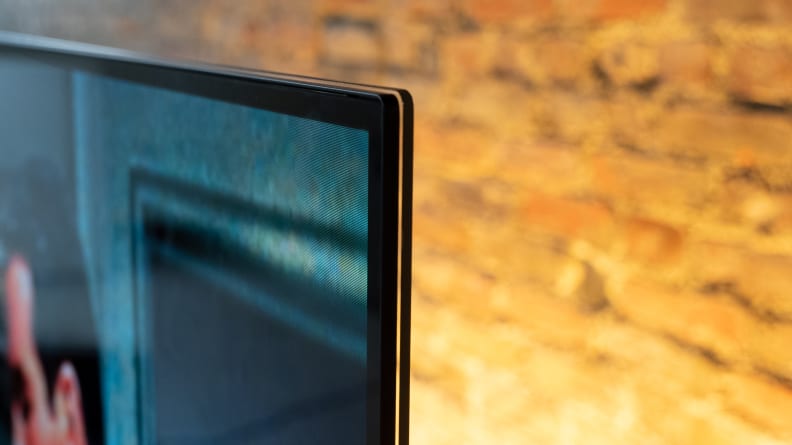
But even among the ultra-thin, high-end OLED TV crowd, the LG E9's visual design is one of the most head-turning. While the LG C9 highlights the stand at the bottom of the panel, the E9 tucks its weighted anchor behind glass, giving the impression that the E9 is a freestanding piece of glass that produces an incredible picture.
What We Don't Like
Despite dazzling contrast, the E9 doesn't get as bright as some of its competitors
Despite it being surprisingly bright for a contemporary HDR OLED TV, the LG E9, unsurprisingly, is not as bright as some of its high-end, non-OLED competitors. If you've got a dedicated home theater set-up, you needn't worry—the E9 will be plenty bright in dim or dark rooms. If you're planning on setting up your new TV in a room that gets a good amount of sunlight, however, you might want to consider a TV with a higher peak-brightness ceiling.
The recently released Vizio P-Series Quantum X, for instance, is a competitively priced premium TV that's tailor-made for a well-lit living room. With the Quantum X, you won't be getting the mesmerizing, inky black levels that OLED TVs are known for, but its backlit LED panel routinely reaches levels of brightness that are twice as potent as the LG E9 at its peak. Both of these heavyweights are among the best TVs you can buy in 2019, but only one of them—the Quantum X—is able to climb as high as 2,000+ nits.
The tradeoff here is that the colors on the P-Series Quantum X aren't quite as vivid as those found on the LG E9—and in fact, the E9 edges out the Vizio PQX in nearly every other category, too. That said, if what you're looking for is sheer brightness above all else, the LG E9 (and OLED TVs in general) may not be right for you.
OLED TVs are still prohibitively priced for most people
While the slow-and-steady decline in the cost of OLED technology is unquestionably a good thing for consumers, these TVs are still a pie-in-the-sky proposition for ham-and-eggers like myself. Perhaps one day we'll all be lucky enough to bask in the sweet, sweet glow of organic LED TVs, but for now, the technology is priced at a premium that most of us can't afford.
To be clear, I don't think the LG E9 is overpriced given its performance and features, but the cost of OLED TVs in general remains a barrier for most people. Of all the currently-for-sale TVs we've tested, for instance, the best non-OLED option, the Vizio P-Series Quantum X, is well over $1,000 less than an LG E9 of a similar size.
Should You Buy It?
Yes—it's one of the best TVs you can buy in 2019.
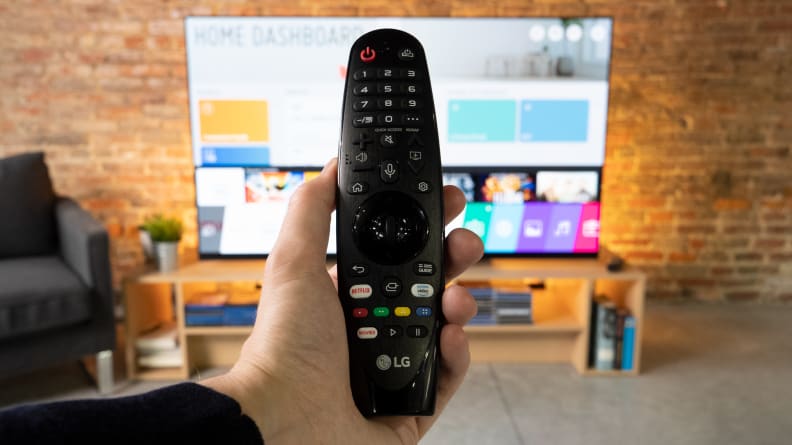
The way I see it, there are only two reasons not to invest in the LG E9 if you're in the market for a top-shelf TV. First, if you're at all worried about your next TV fighting ambient light in whatever room you imagine it occupying, an OLED might not be ideal.
Second, if you're committed to getting a premium TV over a mid-range or budget-friendly alternative but still blushing over the E9's price, I recommend one of the E9's more affordable competitors in the high-end price bracket. In both of these scenarios, I'd recommend a TV with quantum dots—they're brighter and, in most cases, not quite as pricey. You'll be missing out on the E9's HDMI 2.1-supported inputs, its extra-wide viewing angle, and the head-turning, ultra-thin design, but perhaps those features don't add up to the difference in cost to you, personally.
But if all you're looking for is a top-of-the-line TV with an incredible picture and future-proof hardware, the LG E9 is a sound investment. If you want to save a little bit of money, the 65-inch LG C9—another new LG OLED for 2019 and our current #1-rated TV—is about $300 less than the 65-inch LG E9. It doesn't get quite as bright as the E9 and carries a slightly different design, but it is the better value.
Meet the tester
Michael Desjardin graduated from Emerson College after having studied media production and screenwriting. He specializes in tech for Reviewed, but also loves film criticism, weird ambient music, cooking, and food in general.
Checking our work.
Our team is here to help you buy the best stuff and love what you own. Our writers, editors, and experts obsess over the products we cover to make sure you're confident and satisfied. Have a different opinion about something we recommend? Email us and we'll compare notes.
Shoot us an email
